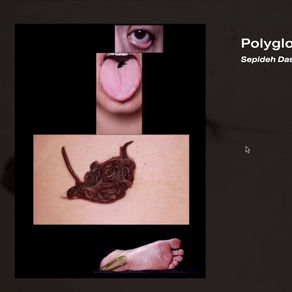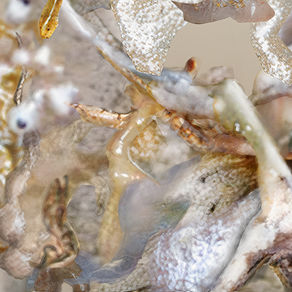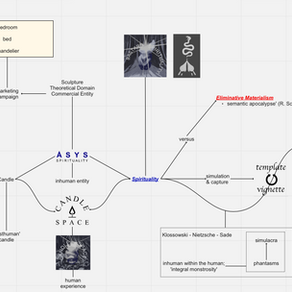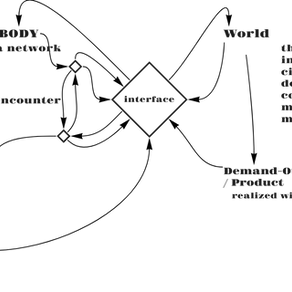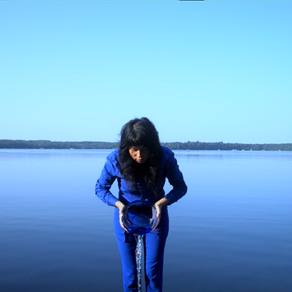Posthuman Studies Lab
Symposium and Workshops: Posthumanism and Worldbuilding
Programmer and Organizer: Sepideh Majidi
● Workshops and Conversations:
Francesca Ferrando: Posthumanism and Worlding
October 9th- 10 am PST
Webinar Link: https://us02web.zoom.us/j/87298487940
David Roden: Goodman and the World Behind the Schemes
October 10th-10 am PST
Webinar Link: https://us02web.zoom.us/j/82974304854
● Reading Group and Workshop:
"Ways of Worldmaking" by Nelson Goodman
Session-1. September 25: 𝐊𝐧𝐨𝐰𝐥𝐞𝐝𝐠𝐞 𝐚𝐬 R𝐞𝐜𝐨𝐧𝐬𝐭𝐫𝐮𝐜𝐭𝐢𝐨𝐧
Main Reading:
“Words, Works, Worlds”. Nelson Goodman, Ways of Worldmaking, Ch. 1
Session-2.September 26: 𝐂𝐥𝐚𝐬𝐡 𝐚𝐧𝐝 𝐃𝐲𝐧𝐚𝐦𝐢𝐜𝐬 B𝐞𝐭𝐰𝐞𝐞𝐧 𝐖𝐨𝐫𝐥𝐝𝐬
Main Reading:
“On Rightness of Rendering”. Nelson Goodman, Ways of Worldmaking, Ch. 7
instructors for the workshop: Cássia Siqueira & Sepideh @Worlds and Models Lab
● Artist Presentation/Panel Series:
October 2nd | 9am - 4pm
Outimaija Hakala: Ants – more than human languages
Magda Vicini: The time fragmentation/unification/relativization
Mafe Izaguirre: Hybrid Spiritual Systems: Self-Hacking and Cognitive Alteration.
Ana Ruiz Valencia: Sounding the continuum
D.Priyanka Bajaj: UNIFIED THEORY OF COMBINED SCIENCES
Rodrigo Gutierrez: Agents of Multisensory Experience
Paige Emery: Fluid Relations For Endurance
Sutirtho Roy: Toys, Animals and Nature: An Eco-Critical Gaze into the World of Play
Buket Yenidogan: Ritual of Rejoin | Becoming Ocean
Simin Azarpour: The cosmogenesis, or the multiversal evolution/involution
Gagan Singh: drawings and stories
Tiny Domingos: Limitrophy as transformational process
Tara Mukund: Entangled in the Heterotopia
Ygor Anario: Intertwining Rhythm, Protoliths and Metamorphic Bodies


Outimaija Hakala
Artist/Researcher
Ants – more than human languages

Ana Ruiz Valencia
Artist/Researcher
Sounding the Continuum

D. Priyanka Bajaj
Artist/Researcher
Book of Lainika @Blue Print of Reality

Gagan Singh
Artist/Researcher
Imagined Worlds

Magda Vicini
Artist/Researcher
The time fragmentation/unification/relativization

Kiymet Dastan
Artist/Researcher
Memory Burn

Buket Yenidogan
Artist/Researcher
Experience as Post-Dualistic World-ing

Simin Azarpour
Artist/Researcher
The Cosmogenesis, or the Multiversal Evolution/Involution

Tara Mukund
Artist/Researcher
Entangled in the Heterotopia

Kaushik Varma
Artist/Researcher
Noema

Sutirtho Roy
Artist/Researcher
The Creator in the Creation: Fractured Selves in a Liminal Space, Seen Through a Meta-textual Lens of World-building

Divya Singh
Artist/Researcher
Tachyon

Sepideh Majidi
Philosopher,Founder,Programmer/Instructor
Posthumanism and Worldbuilding

Mafe Izaguirre
Artist/Researcher
Hybrid Spiritual Systems: Self-Hacking and Cognitive Alteration.

Hallidonto
Artist/Researcher
Sanctum Cyborgia

Tiny Domingos
Artist/Researcher
Hybrid Togetherness: Reconnecting With the Living and the Mineral

Mustafa Kemal Yurttas
Artist/Researcher
Posthuman Body as an Interdisciplinary Concept in Today's Contemporary Art




















